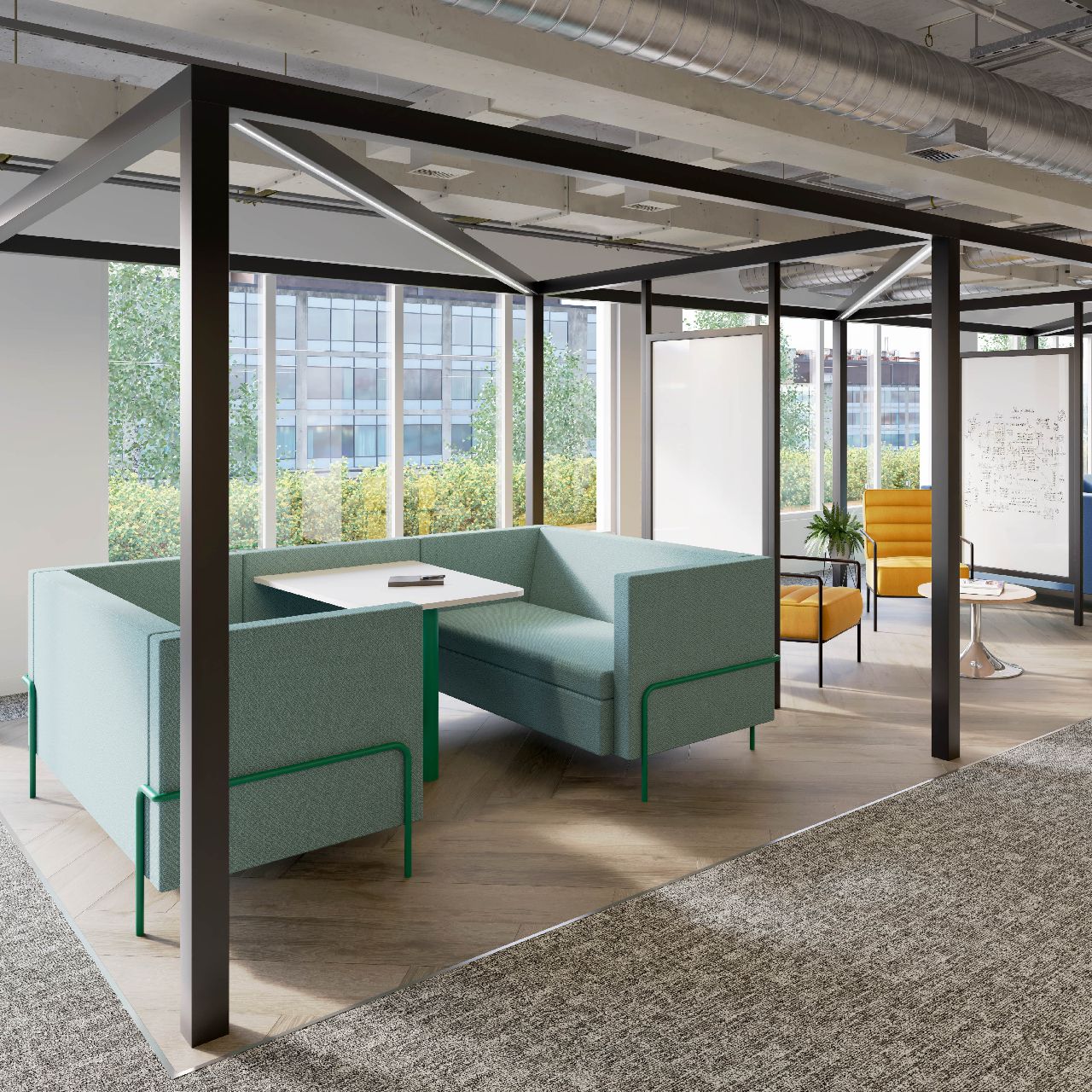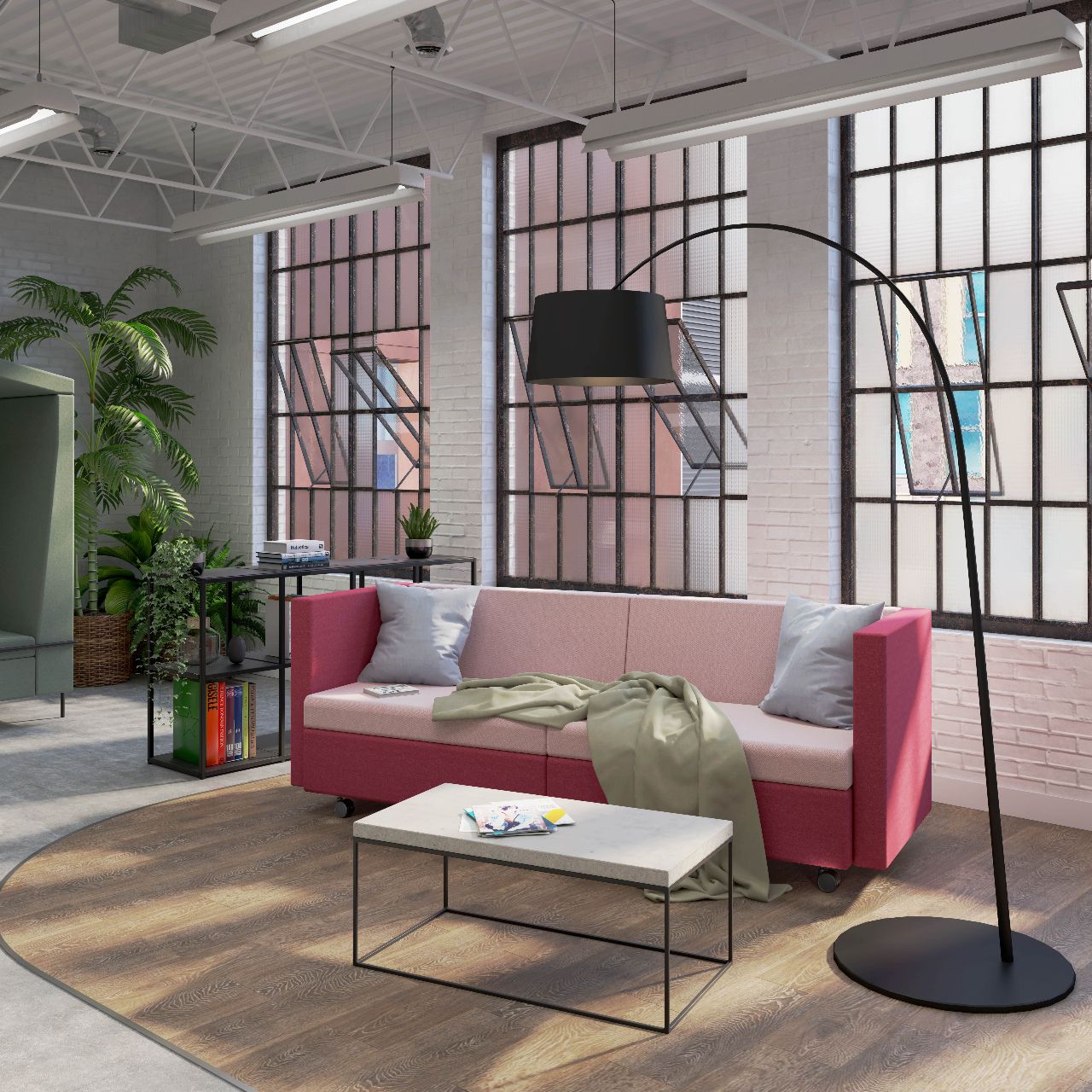Workspaces are starting to call out for greener times. Whether that be in the way we treat our spaces or how we utilise them. Bringing nature into the workplace helps to reduce stress and has also increased creativity and productivity among staff.
Incorporating nature into the workplace can take many different forms. Whether it be using brighter and more natural colours for walls, indoor plants - both real and imitation, or furniture with wooden accents, even the smallest difference can help.
Here are our main tips for creating a greener workspace:
focus on employee health & well-being
Keeping employees healthy is as important as keeping them happy, and air quality in the office should be at the top of every employer’s priority list. Sometimes, redesigning workspaces to create a more tranquil and comfortable atmosphere can significantly improve employees’ mood, productivity, and creativity levels.
Be flexible in every aspect of work life. In design, in scheduling, in ideas and in all aspects of company life. The normal workday is constantly changing, and the 9 to 5 work schedule doesn’t always work for everyone. If your company has the ability to be flexible, why not sit down with your employees and find out how you can improve their work-life balance.
Be adaptable and understand the needs of your employees. Ergonomic and comfortable office furniture allows employees to create a space that can change for their different projects. This may include breakout spaces and soft seating that enhance an employee’s creativity away from normal desk work.
By integrating a greener atmosphere into the workplace, health benefits such as lowered blood pressure, lowered heart rate, and memory restoration have been noticed.


ADD GREENERY & COLOUR TO YOUR ENVIRONMENT
If you’re considering creating a greener workspace, make sure you plan ahead. Start by considering the colours and materials that you’re using.
Adding even
the smallest bit of greenery to your working environment can make a difference.
Plants can not only help you improve your indoor air quality, but they can also
impact employees psychologically as well.
When choosing plants for the office,
make sure you are choosing plants that don’t require a lot of tending to and
don’t require high levels of direct sunlight to sustain. Studies show that
plants can also help to boost productivity and mood. Even wall art
featuring views of nature can positively impact employees within the workplace.
Choose light, bright colours that will increase the mood and productivity levels of everyone in the workspace. Bright, inviting colours have been seen to create a calming and relaxing atmosphere in office spaces, as well as create a more sociable and collaborative feel.
maXIMISE NATURAL LIGHTING
Whenever possible, natural daylighting is always the greenest way to go. Being exposed to natural light is important for us; we thrive on natural light.
Natural light is known to boost energy and serotonin levels, something especially important for those working indoors. Studies have shown a significant difference between employees who work under artificial light and those who work under a mix of artificial and natural light, with a 40% increase in productivity for those taking in the natural daylight during their working hours.
Lighting a space with natural or artificial light has also been seen to improve our circadian rhythm.
LED lights are the single best option for artificial energy-efficient lighting. They use 1/10th of the electricity of incandescent bulbs and last about 20 times longer, so they can save you a lot of money on energy bills and constant bulb purchases as well.

Other changes to make your workspace greener may include;
1. Opting for eco-friendly and sustainable office supplies and furniture
2. Recycling on a daily basis
3. Turning of electronics, lighting and heat every evening.
In the
workplace, even the smallest changes toward creating a green environment can
make a difference.
Will you be implementing any green practices in your workplace?

